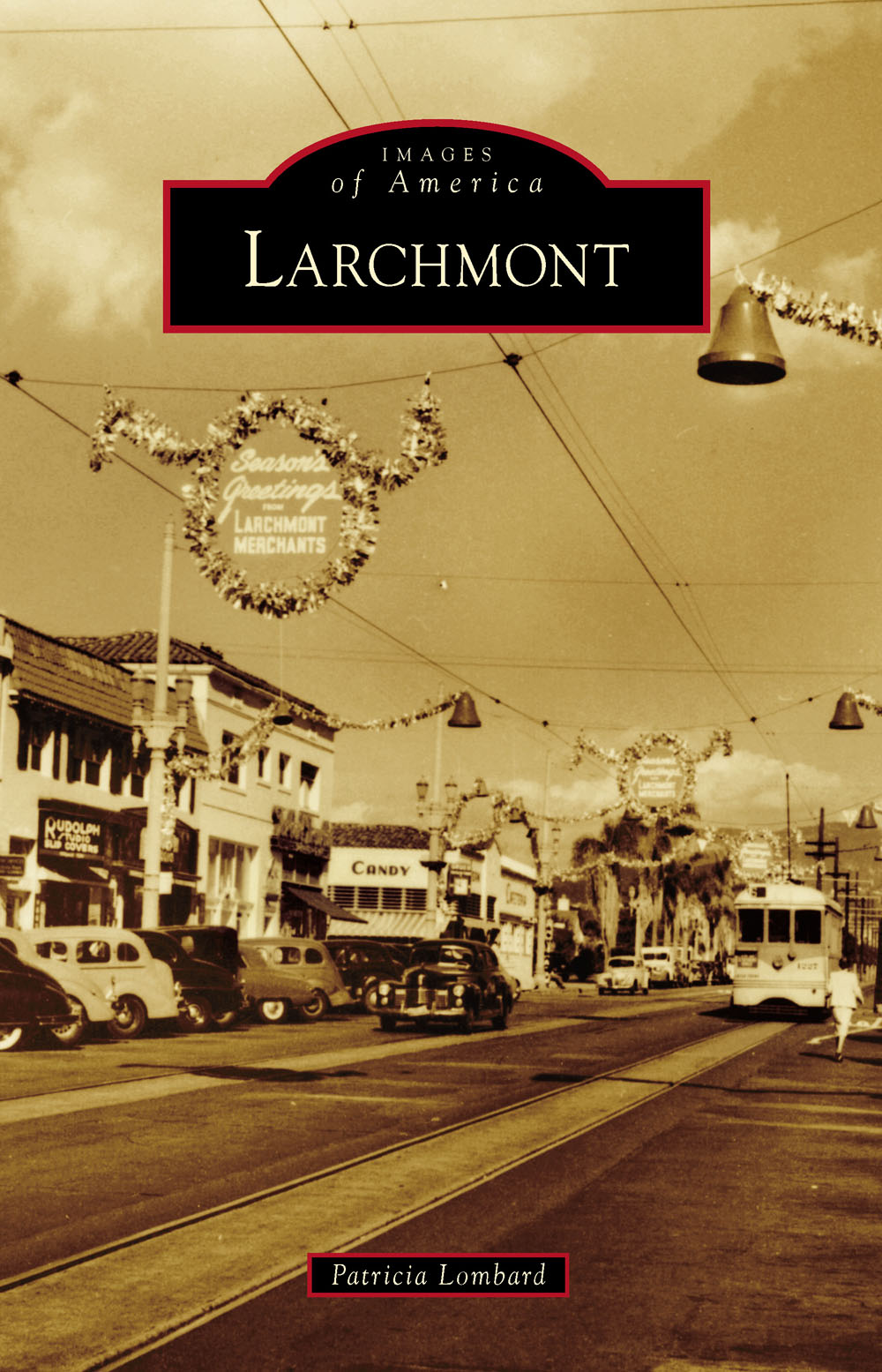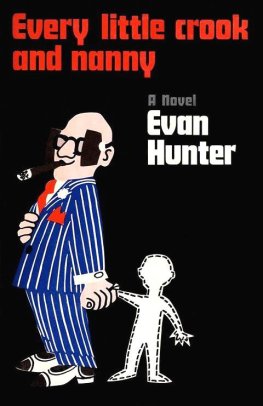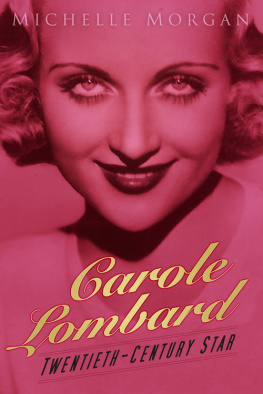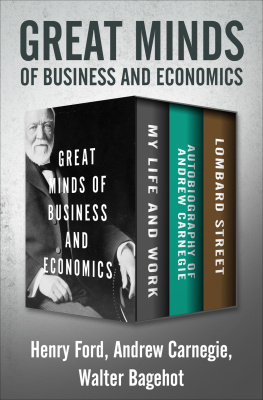Lombard - Larchmont
Here you can read online Lombard - Larchmont full text of the book (entire story) in english for free. Download pdf and epub, get meaning, cover and reviews about this ebook. City: California;Los Angeles;Larchmont Boulevard;Larchmont Boulevard (Los Angeles;Calif.);Los Angeles (Cal, year: 2015, publisher: Arcadia Publishing Inc., genre: Non-fiction. Description of the work, (preface) as well as reviews are available. Best literature library LitArk.com created for fans of good reading and offers a wide selection of genres:
Romance novel
Science fiction
Adventure
Detective
Science
History
Home and family
Prose
Art
Politics
Computer
Non-fiction
Religion
Business
Children
Humor
Choose a favorite category and find really read worthwhile books. Enjoy immersion in the world of imagination, feel the emotions of the characters or learn something new for yourself, make an fascinating discovery.

- Book:Larchmont
- Author:
- Publisher:Arcadia Publishing Inc.
- Genre:
- Year:2015
- City:California;Los Angeles;Larchmont Boulevard;Larchmont Boulevard (Los Angeles;Calif.);Los Angeles (Cal
- Rating:3 / 5
- Favourites:Add to favourites
- Your mark:
- 60
- 1
- 2
- 3
- 4
- 5
Larchmont: summary, description and annotation
We offer to read an annotation, description, summary or preface (depends on what the author of the book "Larchmont" wrote himself). If you haven't found the necessary information about the book — write in the comments, we will try to find it.
Larchmont — read online for free the complete book (whole text) full work
Below is the text of the book, divided by pages. System saving the place of the last page read, allows you to conveniently read the book "Larchmont" online for free, without having to search again every time where you left off. Put a bookmark, and you can go to the page where you finished reading at any time.
Font size:
Interval:
Bookmark:

IMAGES
of America
LARCHMONT
ON THE COVER:SEASONS GREETINGS FROM LARCHMONT MERCHANTS, 1955. This picturesque view of Larchmont Boulevard looks north, with Hollywood and the Santa Monica Mountains in the distance. Holiday decorations hang from the railway lines of the Los Angeles Railway. LARY 3 Line cars operated along Third Street and Larchmont Boulevard. Starting in 1948, rail service was gradually phased out in the neighborhoods around Larchmont. A new 3 Line trolley coach replaced rail service west of Larchmont Boulevard, operating as the S Line shown in this photograph. (Courtesy of the Larchmont Chronicle.)
IMAGES
of America
LARCHMONT
Patricia Lombard

Copyright 2015 by Patricia Lombard
ISBN 978-1-4671-3411-8
Ebook ISBN 9781439653937
Published by Arcadia Publishing
Charleston, South Carolina
Library of Congress Control Number: 2015945755
For all general information, please contact Arcadia Publishing:
Telephone 843-853-2070
Fax 843-853-0044
E-mail
For customer service and orders:
Toll-Free 1-888-313-2665
Visit us on the Internet at www.arcadiapublishing.com
For everyone who loves Larchmont and seeks to preserve this charming, neighborhood-serving village
CONTENTS
ACKNOWLEDGMENTS
Thank you to Jane Gilman, founding publisher of the Larchmont Chronicle, for her invaluable assistance in providing photographs for this book. Unless otherwise noted, all the images in this book are from the Larchmont Chronicle. Thanks to John Welborne, current publisher of the Larchmont Chronicle. Thanks to Mark Wanamaker at Bison Archives. Thanks to Jason Lavitt, Keith Nelson, and Carolyn Ramsay, who also donated photographs.
INTRODUCTION
This is the story of Larchmont Boulevard, a quaint neighborhood street located in the middle of the city of Los Angeles between Melrose Avenue and Third Street. Surrounded by historic neighborhoods that grew up around it, Larchmont has been described as an island of small town in an ocean of urban sprawl. Known as the village by locals, Larchmont has easy-angle parking and charming, tree-lined sidewalks that offer the opportunity to shop and stroll and meet and greet as much today as 95 years ago. The result is an enduring sense of neighborhood and community, provoking profound affection for this historic district among newcomers and old-timers alike.
Larchmont was originally named Glenwood according to Los Angeles city archives. The name was changed to Larchmont in 1912, most likely after the residential village on Long Island Sound. Los Angelenos were mostly transplants from the East Coast and imported much of that ethos to their new home, creating a better, sunnier version of where they left. Los Angeles city records show improvements to the street, including sewers and street curbs constructed around that time. Between 1900 and 1920, the population of Los Angeles exploded. In 1900, the Los Angeles city population was 102,479; by 1910, it had tripled to 310,198; and by 1920, it swelled to 576,673. That five-fold increase is central to understanding the nature of Los Angeles and the neighborhoods built by these newcomers that would create the city of today.
Julius J. La Bonte and his business associate Charles Ramson were among those newcomers. They were successful businessmen who came to Los Angeles with their families to retire and enjoy the Southern California climate.
Born in Traverse City, Michigan, in 1879, La Bonte married the former Pauline Leitelt of Grand Rapids, Michigan, in 1910. He sold his general store in Traverse City to manage the Leitelt Iron Works and Foundry in Grand Rapids for his wifes family. La Bonte was ready when World War I increased the demand for metal. The family business was so successful, he sold it to his employees in 1919 and retired to Los Angeles in 1920. The La Bonte family wintered in Los Angeles and knew it well. They bought a house at 340 South Arden Boulevard. It was a huge house, built by the Stanton Lumber heirs, recalled their only daughter, Charlotte La Bonte Lipson, in an interview with the Larchmont Chronicle in November 1991. When he arrived in Los Angeles, my father wanted something to do. He walked all around this area and met with a number of city planners and decided that commercial real estate was the way to go, explains Lipson. La Bonte bought lots along the boulevard when the streetcar line was extended to run north on Larchmont from Third Street up Melrose Avenue to the Hollywood Mineral Hot Springs.
In September 1921, The Los Angeles Times reported that Julius La Bonte and Charles Ramson purchased seven lots on Larchmont Boulevard to create a business district of 30 stores between First Street and Beverly Boulevard. He was credited with building 70 percent of the structures on the street as well as having the vision to create the first neighborhood shopping street in the city of Los Angeles that catered to the adjacent new neighborhoods of Larchmont Heights (now known as Larchmont Village), New Windsor Square (now known as Windsor Square), and Hancock Park. According to the Times, every store was leased before the buildings were finished. Streetlights fitted to railway power poles makes this one of the best illuminated sections of the city.
My father always had a very clear idea of what Larchmont Boulevard should be, Charlotte Lipson recalls. He always saw it as a service street for the carriage trade of Windsor Square and Hancock Park. It was the first neighborhood shopping center in Los Angeles.
La Bontes original buildings were Mission Revivalstyle architecture with clay tile roofs. Early shops and businesses included the Windsor Square Pharmacy, Larchmont Cafe, Larchmont Electric Company, AA Carpet Company, and Larchmont Motor Service Station, which sold ARCO gasoline at the corner of First Street and Larchmont Boulevard.
J.J. La Bonte was the one who put the money together with the dream, says Lipson. Except for one building at 124 North Larchmont, which he built as an investment for his family. He financed the other buildings by selling their mortgages to his contacts in Michigan. His main contractor was Clarence Bean.
She further recalls, My father stipulated that his buildings be constructed of brick, because that was the material he was familiar with in the Midwest. He planned for a theater, bank, grocery store, drugstore, bakery, dry cleaners, and candy store and always looked for continuity in the business of his tenants. He knew customers would come back to the same locations.
Fortunately, La Bonte got out of the stock market six months before it crashed, but when the government closed all the savings and loans during the Depression, the real estate bubble burst. La Bonte sold all his properties except for the one he owned outright and the one his daughter (who married Jack Lipson, a plumber who rented office space from her father) still holds today. In 1982, Lipson chose to save the building, renovate it, and bring it up to seismic code at great expense rather than tear it down. I didnt have the heart to demolish it, she told the Larchmont Chronicle in November 1991. I owed it to Larchmont not to.
After the Depression, life changed for the well-healed residents surrounding Larchmont; however, the next generation, no longer able to afford their own houses, returned to their family homes to raise their children. This brought life back to Larchmont. By 1940, there were over 40,000 people employed in the film industry, many at the movie studios located next door to Larchmont. The population of Los Angeles was 1.5 million.
Next pageFont size:
Interval:
Bookmark:
Similar books «Larchmont»
Look at similar books to Larchmont. We have selected literature similar in name and meaning in the hope of providing readers with more options to find new, interesting, not yet read works.
Discussion, reviews of the book Larchmont and just readers' own opinions. Leave your comments, write what you think about the work, its meaning or the main characters. Specify what exactly you liked and what you didn't like, and why you think so.







